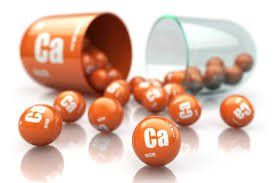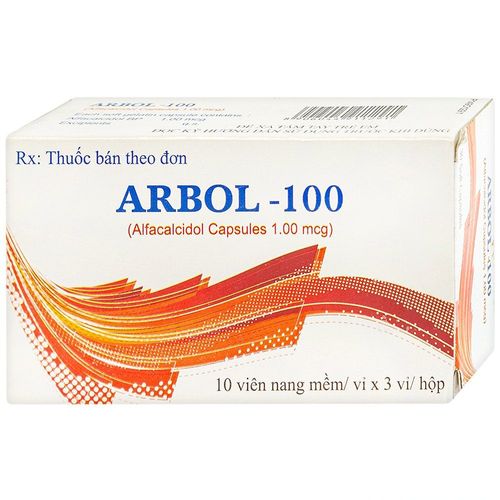This is an automatically translated article.
The article is professionally consulted by Master, Doctor Vu Quoc Anh - Department of Pediatrics - Neonatology - Vinmec Danang International General Hospital. Dr. Anh has nearly 10 years of experience as a resident doctor and treating doctor at Hue Central Hospital and Danang Children's Hospital.Rickets in infants with vitamin D deficiency is quite common, especially in premature, low birth weight babies. It is possible to treat rickets in infants with vitamin D deficiency by giving infants vitamin D, and at the same time combining them with exposure to sunlight,...
1. Infants with vitamin D deficiency have rickets
Vitamin D deficiency rickets in infants is a bone dystrophy that makes bones soft and fragile. Rickets caused by vitamin D deficiency, also known as nutritional rickets, is quite common in infants, especially premature, low birth weight babies.Rickets in infants vitamin D deficiency affects the child's development, if not treated promptly can increase the risk of bacterial infections, including respiratory infections such as pneumonia.
2. Causes of rickets in infants vitamin D deficiency
Rickets in infants with vitamin D deficiency can be due to one of the following reasons:Pregnant mother has vitamin D deficiency: The fetus absorbs vitamin D from the mother through the placenta. After birth, the baby's source of vitamins is mainly from breast milk. If the mother is deficient in vitamin D, it will also make the child vitamin D deficient and lead to early rickets.

Trẻ sơ sinh thiếu vitamin D bị còi xương
3. Manifestations of rickets in infants with vitamin D deficiency
Infants with vitamin D deficiency may have early and late symptoms as follows.3.1 Early manifestations of rickets in infants with vitamin D deficiency
The child has trouble sleeping, or is startled, or the child is fussy. Children often sweat a lot, especially at night, even when it's cold. Children have turban hair loss at the back of the head. Children have physical retardation, flabby muscles, decreased muscle tone, pale skin, enlarged spleen.
Trẻ ngủ hay giật mình là dấu hiệu của bệnh còi xương do thiếu vitamin D
3.2 Late manifestations of rickets in infants with vitamin D deficiency
Children are slow in motor skills such as rolling, crawling, walking, ... Children have wide fontanelles, soft fontanelles are palpable, and they heal slowly. The child's skull is deformed, the head is flat, and when pressed or touched, it can be seen to be concave, the skull bone is soft. The skull may have a hump, usually in the apex or forehead region. Children with delayed teething, teeth may grow out of balance. Ribs, rib cage deformed, crooked, kyphosis spine. Deformed legs, bow legs, developed carpal bones, hypertrophy, enlargement, underdeveloped pelvis. Children can have seizures when blood calcium levels drop low due to vitamin D deficiency.4. Diagnosis of rickets in infants with vitamin D deficiency
Diagnosis of rickets due to vitamin D deficiency in infants is based on some basic tests as follows:Biochemical test: When a child has rickets due to vitamin D deficiency, the phosphorus level in the blood decreases to about 1 .5 - 3.5 mg/dL, while the normal value is around 4.5 - 6.5 mg/dL. Based on the level of 25(OH) D in the blood to assess the status and degree of vitamin D deficiency. 25(OH) D content > 75 nmol/L is enough vitamin D. Bone X-ray: Bone X-ray It is also a method used to diagnose rickets caused by vitamin D deficiency in infants. X-ray allows to evaluate the ossification of the bones, children with rickets will have images of reduced bone density, large bone heads, slow ossification, and irregular ossification margins.

Xét nghiệm sinh hóa giúp chẩn đoán còi xương ở trẻ sơ sinh thiếu vitamin D
5. Treatment of rickets by giving infants vitamin D
Giving infants vitamin D as prescribed by a doctor is a method to treat rickets, the specific dosage is as follows:Children aged 0-18 months: Children are breastfed or drink formula milk but the amount of milk <1l milk/day, or vitamin D unresponsive about 400 units/day, give the child continuous vitamin D supplementation at a dose of 400 units/day. Premature, low birth weight, premature infants, twins, dark skin: After 2 weeks of birth, consider giving infants vitamin D supplements continuously at a dose of 400-800 units/day for 15 months. Children from 6 to 18 months old: Give vitamin D to children at a dose of 200,000 units/6 months/time.
6. Prevention of rickets caused by vitamin D deficiency in infants
Rickets caused by vitamin D deficiency in infants can be prevented by the following measures:Exclusive breastfeeding for the first 6 months after birth, during this time, the mother needs to pay attention to supplementing with supplements. , multivitamins to increase vitamin D content in breast milk for babies. Children from 6 months of age and older and starting to eat solid foods need to pay attention to giving them additional and enhanced green vegetables. In addition to giving infants vitamin D, it is necessary to combine them with sunbathing and exposure to sunlight every day. Sunbathing time is gradually increased from 5 to 20 minutes, suitable sunbathing time is before 8 am. Care should be taken to avoid letting children get cold or hot when sunbathing.
Infants with vitamin D deficiency will lead to rickets, causing delays in physical and intellectual development. It is possible to prevent rickets in children by paying attention to providing enough vitamin D for children every day through breast milk or formula, and exposing children to sunlight in the morning.

Tắm nắng giúp trẻ hấp thu vitamin D tự nhiên
Please regularly visit Vinmec.com website and update useful information to take care of your baby and family.














